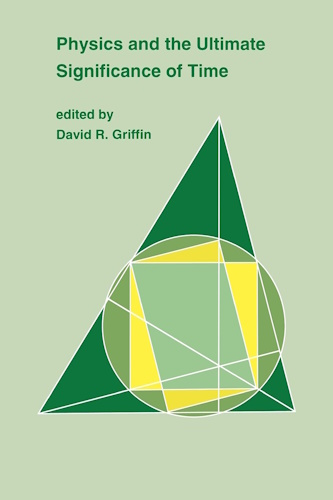

Physics and the Ultimate Significance of Time

Challenges the conventional view of the nature of time.
About the Author
David Ray Griffin is Professor of Philosophy and Religion at the School of Theology at Claremont and Claremont Graduate School and Executive Director of the Center for Process Studies.
Paperback: 340 pages
Publisher: State University of New York Press (November 15, 1985)
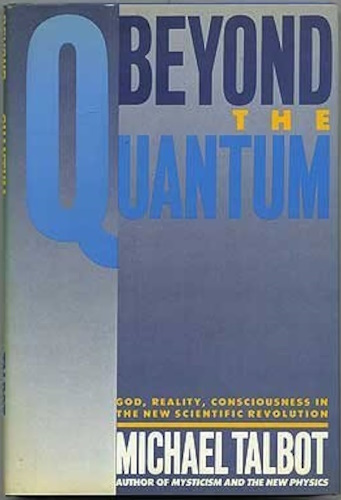

From Library Journal
Quantum mechanics describes a universe with physical properties that run completely contrary to everyday experience and intuition. These strange properties cause some people to seek equally strange philosophical theories to explain them. Talbot attempts to link the physical theories with some non-physical experimental results. The latter are, if true, disturbing and fascinating. Among the subjects explored are poltergeists, the possibility of instantaneous communication across great distances, and the nature of the mind and consciousness. This is an interesting combination of physics, metaphysics, and parapsychology. Harold D. Shane, Mathematics Dept., Baruch Coll., CUNY Copyright 1987 Reed Business Information, Inc.
Hardcover: 240 pages
Publisher: Scribner; First Edition edition (January 26, 1987)
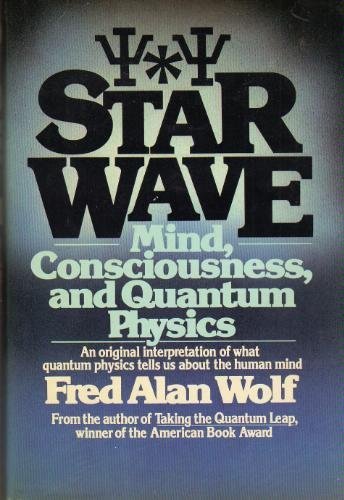

Star Wave: Mind, Consciousness and Quantum Physics

Relates the discoveries of quantum physics to the workings of the human mind and explores the process of observing shapes and how and what the mind perceives.
Hardcover: 342 pages
Publisher: Macmillan; 1st edition (1984)
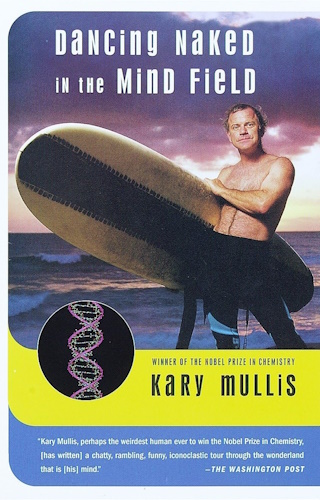

Dancing Naked in the Mind Field

From the Inside Flap
Here is a multidimensional playland of ideas from the world's most eccentric Nobel-Prize winning scientist. Kary Mullis is legendary for his invention of PCR, which redefined the world of DNA, genetics, and forensic science. He is also a surfer, a veteran of Berkeley in the sixties, and perhaps the only Nobel laureate to describe a possible encounter with aliens. A scientist of boundless curiosity, he refuses to accept any proposition based on secondhand or hearsay evidence, and always looks for the "money trail" when scientists make announcements.
Mullis writes with passion and humor about a wide range of topics: from global warming to the O. J. Simpson trial, from poisonous spiders to HIV, from scientific method to astrology. Dancing Naked in the Mind Field challenges us to question the authority of scientific dogma even as it reveals the workings of an uncannily original scientific mind.
Paperback: 240 pages
Publisher: Vintage; Reprint edition (January 4, 2000)
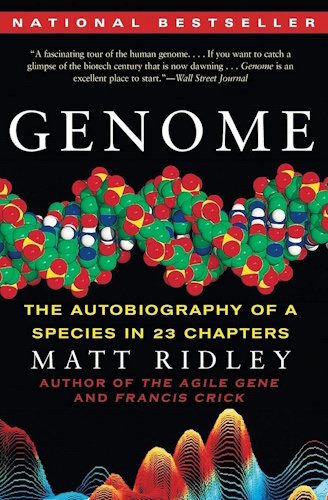

Genome: The Autobiography of a Species in 23 Chapters

The genome's been mapped. But what does it mean? Arguably the most significant scientific discovery of the new century, the mapping of the twenty-three pairs of chromosomes that make up the human genome raises almost as many questions as it answers. Questions that will profoundly impact the way we think about disease, about longevity, and about free will. Questions that will affect the rest of your life. Genome offers extraordinary insight into the ramifications of this incredible breakthrough. By picking one newly discovered gene from each pair of chromosomes and telling its story, Matt Ridley recounts the history of our species and its ancestors from the dawn of life to the brink of future medicine. From Huntington's disease to cancer, from the applications of gene therapy to the horrors of eugenics, Matt Ridley probes the scientific, philosophical, and moral issues arising as a result of the mapping of the genome. It will help you understand what this scientific milestone means for you, for your children, and for humankind.
About the Author
Matt Ridley is the award-winning, bestselling author of several books, including The Rational Optimist: How Prosperity Evolves; Genome: The Autobiography of a Species in 23 Chapters; and The Red Queen: Sex and the Evolution of Human Nature. His books have sold more than one million copies in thirty languages worldwide. He writes regularly for The Times (London) and The Wall Street Journal, and is a member of the House of Lords. He lives in England.
Paperback: 368 pages
Publisher: Harper Perennial; Reprint edition (May 30, 2006)
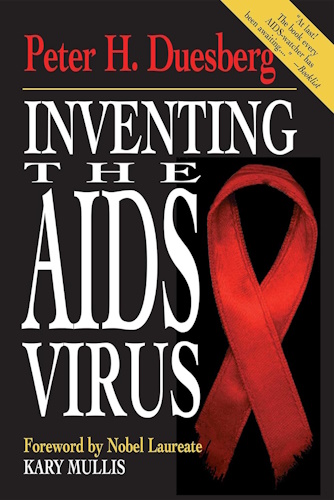

From Booklist
At last! This is the book every AIDS-watcher has been awaiting, in which the most prominent and persistent critic of HIV as the cause of AIDS presents his case most exhaustively and popularly. Duesberg, himself a virologist, stoutly maintains that HIV cannot cause AIDS because it fails to meet the rules by which a virus is implicated as disease-causing. He says that the causes of AIDS in First World countries most probably are overuse of toxic drugs--by legal prescription (e.g., AZT) as well as illicit use (e.g., the nitrite inhalants known as poppers that are used to enhance sexual capability)--and multiple and repeated infections with venereal diseases; in the Third World, they are malnutrition and maladies (e.g., tuberculosis) rare in wealthy nations but still prevalent in poor ones as well as, again, substance abuse. Duesberg massively documents and cogently argues these positions but not before laying out the historic and political reasons why most members of his profession and related medical specialists seized on a viral causation for AIDS. Basically, virologists wanted another success like that with polio and, frustrated by complete failure to find viral causes for cancer, took up AIDS as the perfect challenge as well as, once HIV was discovered, a ticket for prolonging their first-class ride on the medical research gravy train. Strong stuff, but Duesberg has never been alone in this analysis or in his scientific arguments. He has never before gathered his case together and presented it to the general public, though, so regard this book as a milestone essential to any collection concerned with AIDS. Ray Olson
From Kirkus Reviews
A well-credentialed scientist's hard-driving attack on the accepted view that AIDS is an infectious disease caused by HIV. Duesberg (Molecular biology/Univ. of Calif., Berkeley), an early researcher in the field of retroviruses, asserts that HIV, like virtually all retroviruses, is harmless. He finds that HIV meets none of the usual criteria (such as the six laws of virology) used to establish that a microbe causes disease. But if that is so, why do scientists persist in saying that AIDS is an epidemic caused by HIV? As Duesberg tells it, the federal Centers for Disease Control and Prevention needed a serious epidemic to justify its continued existence, and by naming AIDS a single contagious disease, it created an atmosphere of public fear that brought it increased funding and power. The biomedical establishment took note. Having failed to find a viral cause of cancer, Duesberg says, virus hunters needed a new disease, and AIDS was it. The HIV-AIDS connection was then announced by Robert Gallo, head of a retrovirus lab at the National Cancer Institute, at a 1984 press conference rather than demonstrated in a peer- reviewed scientific paper. Further, Duesberg charges, the pharmaceutical companies exploited the situation by bringing back highly toxic failed cancer drugs, such as AZT, which, he says, destroys the immune system and causes AIDS-like symptoms. Duesberg cites other scientists who have questioned the HIV-AIDS hypothesis, among them several Nobel laureates, including Kary Mullis (for Chemistry), the author of this book's foreword. Duesberg's own theory is that AIDS is linked to the use of immunity-suppressing illicit drugs (such as crack and ``poppers''), and he urges investigation along these lines. One need not accept Duesberg's drug hypothesis, however, to be persuaded that the serious charges he makes deserve serious answers. A controversial book, certain to be met with strong resistance from the biomedical establishment. Four appendixes (not seen) include articles on HIV by Duesberg in scientific journals. -- Copyright ©1996, Kirkus Associates, LP. All rights reserved.
Hardcover: 722 pages
Publisher: Regnery Publishing, Inc.; 1st edition (February 27, 1996)
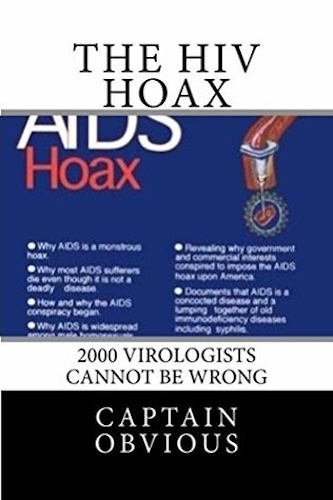
The HIV Hoax: 2000 Virologists cannot be wrong by Captain Obvious (2014-12-09)
Dr. Kary Mullis, Biochemist, 1993 Nobel Prize for Chemistry: Dr. Kary Mullis "If there is evidence that HIV causes AIDS, there should be scientific documents which either singly or collectively demonstrate that fact, at least with a high probability. There is no such document." (Sunday Times (London) 28 nov. 1993)
Dr. Heinz Ludwig Sänger, Emeritus Professor of Molecular Biology and Virology, Max-Planck-Institutes for Biochemy, München. Robert Koch Award 1978: "Up to today there is actually no single scientifically really convincing evidence for the existence of HIV. Not even once such a retrovirus has been isolated and purified by the methods of classical virology." (Letter to Süddeutsche Zeitung 2000)
Dr. Serge Lang, Professor of Mathematics, Yale University: "I do not regard the causal relationship between HIV and any disease as settled. I have seen considerable evidence that highly improper statistics concerning HIV and AIDS have been passed off as science, and that top members of the scientific establishment have carelessly, if not irresponsible, joined the media in spreading misinformation about the nature of AIDS." (Yale Scientific, Fall 1994)
Dr. Harry Rubin, Professor of Molecular and Cell Biology, University of California at Berkeley: Prof. Harry Rubin "It is not proven that AIDS is caused by HIV infection, nor is it proven that it plays no role whatever in the syndrome." (Sunday Times (London) 3 April 1994)
Dr. Richard Strohman, Emeritus Professor of Cell Biology at the University of California at Berkeley: "In the old days it was required that a scientist address the possibilities of proving his hypothesis wrong as well as right. Now there's none of that in standard HIV-AIDS program with all its billions of dollars." (Penthouse April 1994)
Dr. Harvey Bialy, Molecular Biologist, former editor of Bio/Technology and Nature Biotechnology: Harvey Bialy "HIV is an ordinary retrovirus. There is nothing about this virus that is unique. Everything that is discovered about HIV has an analogue in other retroviruses that don't cause AIDS. HIV only contains a very small piece of genetic information. There's no way it can do all these elaborate things they say it does." (Spin June 1992)
Dr. Roger Cunningham, Immunologist, Microbiologist and Director of the Centre for Immunology at the State University of New York at Buffalo: "Unfortunately, an AIDS 'establishment' seems to have formed that intends to discourage challenges to the dogma on one side and often insists on following discredited ideas on the other." (Sunday Times (London) 3 April 1994)
Dr. Gordon Stewart, Emeritus Professor of Public Health, University of Glasgow: Prof. Gordon Stwart "AIDS is a behavioural disease. It is multifactorial, brought on by several simultaneous strains on the immune system - drugs, pharmaceutical and recreational, sexually transmitted diseases, multiple viral infections." (Spin June 1992)
Dr. Alfred Hässig, (1921-1999), former Professor of Immunology at the University of Bern, and former director Swiss Red Cross blood banks:Prof. Alfred Hassig "The sentence of death accompanying the medical diagnosis of AIDS should be abolished." (Sunday Times (London) 3 April 1994)
Dr. Charles Thomas, former Professor of Biochemistry, Harvard and John Hopkins Universities: "The HIV-causes-AIDS dogma represents the grandest and perhaps the most morally destructive fraud that has ever been perpetrated on young men and women of the Western world." (Sunday Times (London) 3 April 1994)
Dr. Joseph Sonnabend, New York Physician, founder of the American Foundation for AIDS Research (AmFAR):Joe Sonnabend "The marketing of HIV, through press releases and statements, as a killer virus causing AIDS without the need for any other factors, has so distorted research and treatment that it may have caused thousands of people to suffer and die." (Sunday times (London) 17 May 1992)
Read the book. You are about to find out how sick the CDC and Government are.
Paperback: 36 pages
Publisher: CreateSpace Independent Publishing Platform (December 9, 2014)
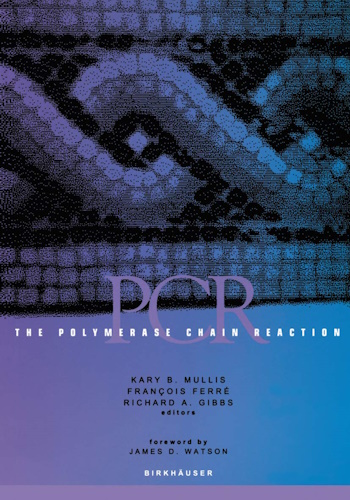

James D. Watson When, in late March of 1953, Francis Crick and I came to write the first Nature paper describing the double helical structure of the DNA molecule, Francis had wanted to include a lengthy discussion of the genetic implications of a molecule whose struc ture we had divined from a minimum of experimental data and on theoretical argu ments based on physical principles. But I felt that this might be tempting fate, given that we had not yet seen the detailed evidence from King's College. Nevertheless, we reached a compromise and decided to include a sentence that pointed to the biological significance of the molecule's key feature-the complementary pairing of the bases. "It has not escaped our notice," Francis wrote, "that the specific pairing that we have postulated immediately suggests a possible copying mechanism for the genetic material." By May, when we were writing the second Nature paper, I was more confident that the proposed structure was at the very least substantially correct, so that this second paper contains a discussion of molecular self-duplication using templates or molds. We pointed out that, as a consequence of base pairing, a DNA molecule has two chains that are complementary to each other. Each chain could then act ". . . as a template for the formation on itself of a new companion chain, so that eventually we shall have two pairs of chains, where we only had one before" and, moreover, " ...
Paperback: 458 pages
Publisher: Birkhäuser; 1994 edition (March 1, 1994)
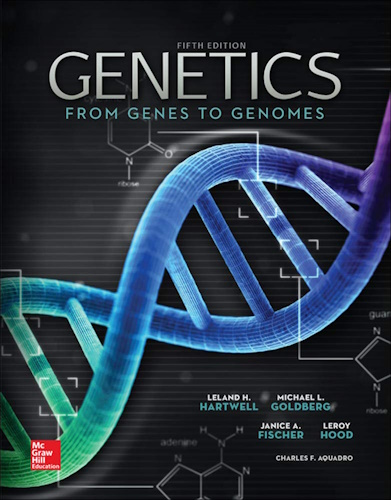

Genetics: From Genes to Genomes, 5th edition

Genetics: From Genes to Genomes is a cutting-edge, introductory genetics text authored by an unparalleled author team, including Nobel Prize winner, Leland Hartwell. The 5th edition continues to build upon the integration of Mendelian and molecular principles, providing students with the links between the early understanding of genetics and the new molecular discoveries that have changed the way the field of genetics is viewed. Users who purchase Connect Plus receive access to the full online ebook version of the textbook as well as SmartBook.
About the Author
Dr. Leland Hartwell is President and Director of Seattle’s Fred Hutchinson Cancer Research Center and Professor of Genome Sciences at the University of Washington. Dr. Hartwell’s primary research contributions were in identifying genes that control cell division in yeast, including those necessary for the division process as well as those necessary for the fi delity of genome reproduction. Subsequently, many of these same genes have been found to control cell division in humans and oft en to be the site of alteration in cancer cells.
Dr. Hartwell is a member of the National Academy of Sciences and has received the Albert Lasker Basic Medical Research Award, the Gairdner Foundation International Award, the Genetics Society Medal, and the 2001 Nobel Prize in Physiology or Medicine.
Hardcover: 816 pages
Publisher: McGraw-Hill Education; 5th edition (September 5, 2014)
![]()
![]()